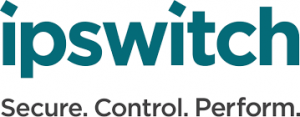 Authored article by: Alessandro Porro, Senior Vice President, Ipswitch
Authored article by: Alessandro Porro, Senior Vice President, Ipswitch
3 mins read
Increasing Collaboration at Work While Reducing Security Risk

January 4, 2025
Copyright 2023, IT Voice Media Pvt. Ltd.
All Rights Reserved

 Authored article by: Alessandro Porro, Senior Vice President, Ipswitch
Authored article by: Alessandro Porro, Senior Vice President, Ipswitch
 With that said, it should be a given that IT wants to make sure everyone can collaborate effectively to get the job done as quickly and effectively as possible. But unfortunately, other departments don’t always see it this way. Too often, OT can be seen as a bottleneck for collaboration or productivity which causes employees to turn to shadow IT to achieve their goals.
With that said, it should be a given that IT wants to make sure everyone can collaborate effectively to get the job done as quickly and effectively as possible. But unfortunately, other departments don’t always see it this way. Too often, OT can be seen as a bottleneck for collaboration or productivity which causes employees to turn to shadow IT to achieve their goals.